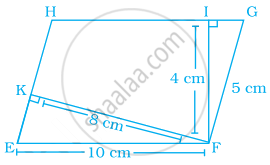Advertisements
Advertisements
प्रश्न
In a parallelogram PQRS (See the diagram) PM and PN are the heights corresponding to the sides QR and RS respectively. If the area of the parallelogram is 900 sq.cm and the length of PM and PN are 20 cm and 36 cm respectively, find the length of the sides QR and SR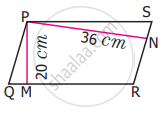
उत्तर
Considering QR as base of the parallelogram height h1 = 20 cm
Area of the parallelogram = 900 cm2
b1 × h1 = 900, b1 × 20 = 900
b1 = `900/20` = 45 cm
Again considering SR as base height = 36 cm, Area = 900 cm2
b2 × h2 = 900, b2 × 36 = 900
b2 = `900/36`
b2 = 25 cm
SR = 25 cm, QR = 45 cm, SR = 25 cm
APPEARS IN
संबंधित प्रश्न
Find the area of the following parallelogram:
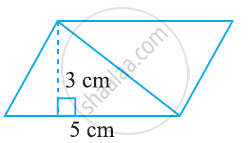
The adjacent sides of a parallelogram are 21 cm and 28 cm. If it's one diagonal is 35 cm; find the area of the parallelogram.
The base of the parallelogram with area is 52 sq.cm and height 4 cm is
What happens to the area of the parallelogram if the base is increased 2 times and the height is halved?
If the base and height of a parallelogram are in the ratio 7 : 3 and the height is 45 cm, then fixed the area of the parallelogram
The area of the parallelogram ABCD is 1470 sq.cm. If AB = 49 cm and AD = 35 cm then, find the height, DF and BE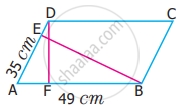
Find the height of the parallelogram whose base is four times the height and whose area is 576 sq.cm
Observe the shapes 1, 2, 3 and 4 in the figures. Which of the following statements is not correct?
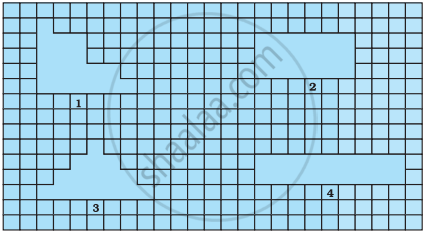
Ratio of area of ∆MNO to the area of parallelogram MNOP in the same figure is ______.
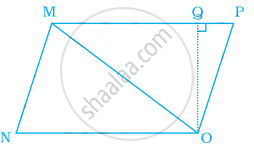
In the given figure, EFGH is a parallelogram, altitudes FK and FI are 8 cm and 4 cm respectively. If EF = 10 cm, then area of EFGH is ______.
